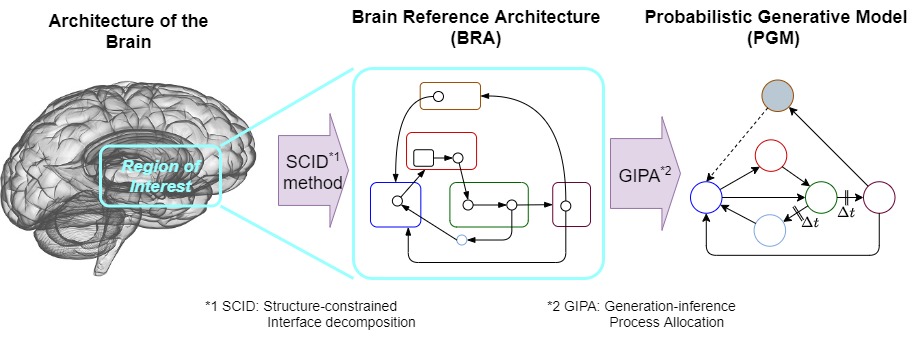The whole-brain architecture approach, which aims to build AGI by learning from the architecture of the whole brain, has been gradually taking shape over a period of more than five years since before the founding of WBAI. The current brain-inspired AGI construction method based on “BRA-driven development” was summarized in first article [1].
WBAI have been working with Tadahiro Taniguchi, Tomoaki Nakamura, Takayuki Nagai, and others for some time on the construction of a brain-inspired probabilistic generative model (PGM) based on brain architecture. Since last year, Kenji Doya, Masamichi Sakagami, Masahiro Suzuki, Akira Taniguchi, and others have been discussing a whole-brain probabilistic generation model (WB-PGM) for robots, and the results were published in an article [2].
As a part of the WB-PGM, Akira Taniguchi, Ayako Fukawa and Yamakawa has design PGM for the hippocampal formation [3]. First, the brain reference architecture (BRA) was designed by the Structure-constrained Interface Decomposition (SCID) method developed by WBAI. Second that BRA is transformed to PGM by performing generative and inferential allocation process (GIPA).

All three of these papers are currently being submitted to a special issue on AI in Journal of Neural Networks, but a preprint is available ahead of time.
- [1] Yamakawa, H. (2021). The whole brain architecture approach: Accelerating the development of artificial general intelligence by referring to the brain. In arXiv [cs.AI]. arXiv. http://arxiv.org/abs/2103.06123
- [2] Taniguchi, T., Yamakawa, H., Nagai, T., Doya, K., Sakagami, M., Suzuki, M., Nakamura, T., & Taniguchi, A. (2021). Whole brain Probabilistic Generative Model toward Realizing Cognitive Architecture for Developmental Robots. In arXiv [cs.AI]. arXiv. http://arxiv.org/abs/2103.08183
- [3] Taniguchi, A., Fukawa, A., & Yamakawa, H. (2021). Hippocampal formation-inspired probabilistic generative model. In arXiv [cs.AI]. arXiv. http://arxiv.org/abs/2103.07356
Parts of these works are supported by many people and activates including the Brain Information Dynamics underlying multi-area interconnected and parallel processing and the Correspondence and Fusion of Artificial Intelligence and Brain Science.



 Japanese
Japanese